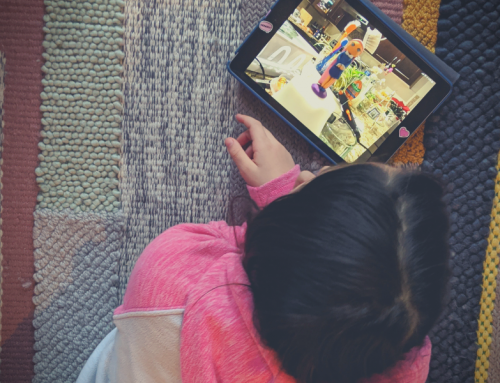When I released my book Screen Captured in September 2019, the world was a completely different place. Heck, it was much different even a month ago. The conclusion I had reached before I started the journey of writing a book was that I was less concerned about how much my kids were on their screens than I was about what they actually did on them. Put simply, I argued that all screen time isn’t created equal. While we should maintain a good balance of online and offline activities for our kids, it is equally important that we look for a good balance when they are on their devices.
A limit of 1 hour per day for a 4-year-old has always felt unreasonable to me. And, it neglects much more important questions in the grand scheme of things. Questions like: “how is that time actually being spent”? An analogy I like is that while reading is generally seen as a good use of time, having our kids reading an erotic novel would be far different than the latest in the Dog Man series. It would be ludicrous to lump all reading activities together, but we constantly seem to be steered into doing so with screens.
The biggest problem I have with hard limits on screen time is that they create a shame culture for parents that exceed them. Which it turns out is most of us.
A Common Sense Media census completed in 2017 showed that kids in the 2-to-4 age range were averaging 2 hours 39 minutes of screen time daily. That’s more than 2.5x the recommended 1 hour per day. That was back in 2017. As a few years have passed, all indications say that children are spending even more time on screens. If you and your family are above recommended screen time limits, trust me when I say that you are not alone. These numbers tell us that the vast majority of parents exceed those limits, and by a healthy margin. We’ve always been well above the recommendations in my household, and I feel absolutely no shame in saying that. And neither should you.
This was already happening long before COVID-19 rocked our world. I have seen so many parents expressing shame and anxiety online because they are letting their children use devices even more as they are home for school and practicing social distancing. I firmly believe that the root of this anxiety can be traced to these screen time recommendations that we were breaking before, are surely breaking now, and will continue to break in the future. Know that these recommendations were always completely arbitrary and subjective in nature. Any empirical evidence claiming to back it up is shaky at best, and there are many studies that have debunked some of the more preposterous claims. I mean, is the argument really that at exactly 1 hour and 1 minute, the child’s brain begins deteriorating or something?
In the face of a global pandemic, I think the irrelevance of limits on screen time rings truer than ever. Parents, please don’t feel any degree of shame or anxiety over screen time. Not now. Not ever. Do what works for you and your family. Make sure your children are getting the balance they need, whatever that means to you. There’s enough to worry about in the world right now without arbitrary screen time limits and shaming.
Stay safe. Stay home. And, be thankful that we have technology to connect us at a time like this.
– Sean, @thatdigitaldad






